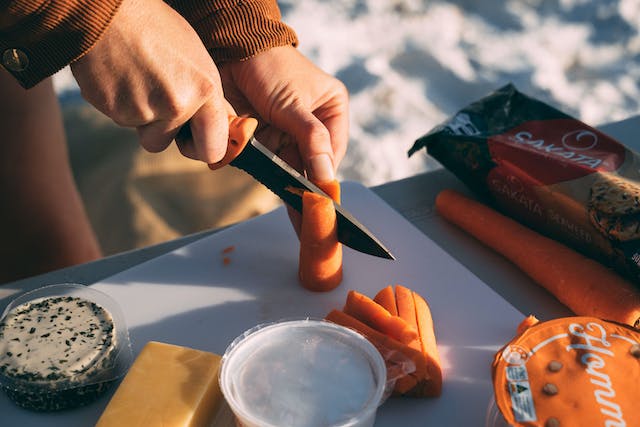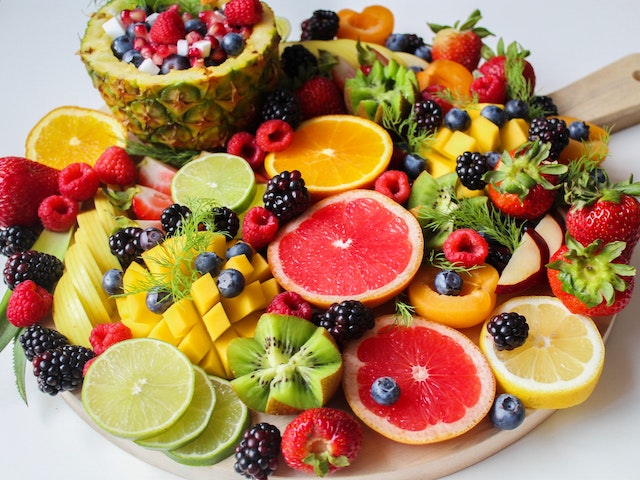Are you tired of seeing your plants struggle to grow? Do you want to boost their growth without spending a lot of money on expensive fertilizers and equipment? Look no further! In this article, we’ll show you 5 surprising gardening hacks that will make a huge difference in the health and vitality of your plants. From using Epsom salt to DIY greenhouses, these tips are easy, affordable, and effective. Get ready to take your gardening skills to the next level with these simple yet powerful tricks!
The Miracle of Epsom Salt
Epsom salt is not just for soothing sore muscles; it’s also a miracle worker in the garden! This natural compound, made up of magnesium and sulfate, can do wonders for your plants.
Magnesium is an essential nutrient that helps plants to grow strong and healthy. Sulfate, on the other hand, aids in the absorption of nutrients from soil. When you add Epsom salt to your soil or use it as a foliar spray, you’re providing your plants with these vital elements.
One way to use Epsom salt is by mixing one tablespoon per gallon of water and applying it directly to the plant’s leaves. The magnesium will be absorbed through the foliage and help improve its color and growth. It works especially well on peppers, tomatoes, roses, and other flowering plants.
Another method is adding Epsom salt to the soil when planting new seedlings or transplants. Mix two tablespoons per gallon of water before pouring around each plant’s base.
Using Epsom salt in your gardening routine can make all the difference – promoting healthy growth while preventing common issues like yellowing leaves due to magnesium deficiency. Try incorporating this simple hack into your next gardening project!
Banana Peels for Fertilizer
Banana peels are often considered as waste, but did you know that they can be a great fertilizer for your plants? This is because banana peels are rich in potassium, phosphorus and calcium which are essential nutrients for plant growth. In this section, we will explore how to use banana peels as a natural and organic fertilizer.
To begin with, start by cutting the peel into small pieces or mashing them up so that they decompose quicker. You can then add these pieces directly to the soil around your plants or bury it about 4 inches deep in the soil. As the peel breaks down over time, it releases essential nutrients which enriches the soil and promotes healthy growth of plants.
Another way to use banana peelings is by making compost tea from them. To make compost tea using banana peels, fill a bucket with water then add some chopped banana skins into it and let it soak overnight. The next day strain out the solids and use this nutrient-rich liquid on your plants once every two weeks.
In addition to being an excellent source of nutrients for your plants’ growth; there’s also evidence suggesting that bananas act as a natural insect repellent due to their high levels of magnesium which repel aphids naturally!
Using banana peels as fertilizers is not only cost-effective but also environmentally friendly since you’re recycling what would have otherwise been thrown away!
Coffee Grounds as Compost
Coffee Grounds as Compost
A morning cup of coffee not only gives you an energy boost but also provides your plants with the required nutrients. Coffee grounds contain nitrogen, potassium, phosphorus and other minerals that are essential for plant growth.
Using coffee grounds as compost is a great way to recycle waste and help your plants thrive. Instead of throwing away used coffee grounds, simply add them to your compost bin or directly into the soil around your plants.
However, it’s important to note that too much coffee ground can be harmful to some plants due to their high acidity levels. So, make sure you use it in moderation and mix it well with other organic matter like leaves or grass clippings.
Another benefit of using coffee grounds in gardening is its pest repelling properties. It has been proven effective against slugs and snails which can damage young seedlings.
So next time you’re enjoying a cup of joe, think twice before discarding those used coffee grounds. Give them a second life by using them as compost for healthier and happier plants!
Eggshells as Pest Repellent
Eggshells as Pest Repellent
Did you know that eggshells can be used not only in the garden but also inside your home? These shells are not only a great source of calcium for plants, but they can also effectively repel pests.
When crushed into small pieces and scattered around plant beds, eggshells create a barrier that slugs and snails find difficult to cross. The sharp edges of the shell irritate their soft bodies, keeping them away from your precious plants.
But it’s not just snails and slugs that eggshells can repel. They’re also effective against other crawling insects such as ants. Simply scatter some crushed eggshells along ant trails or near entry points to deter these pesky invaders.
Eggshell powder is another solution that works well against various garden pests including beetles and caterpillars. A fine layer sprinkled on leaves will keep these bugs at bay without harming your plants.
So next time you’re making breakfast, save those eggshells! Not only will they help reduce waste, but they’ll also come in handy when it comes to pest control in your garden or home.
Cheap and Easy DIY Greenhouse
If you’re looking for a budget-friendly way to extend your growing season, building a DIY greenhouse is the perfect solution. With just a few materials and some basic skills, you can create an enclosed space that protects your plants from harsh weather conditions while also providing them with plenty of sunlight.
One of the simplest ways to build a cheap and easy DIY greenhouse is by using PVC pipes and plastic sheeting. Start by creating a frame out of the PVC pipes, then drape the plastic sheeting over it and secure it in place with zip ties or clips. You can also add doors or vents for ventilation as needed.
Another option is to repurpose old windows or glass doors into a mini greenhouse. Simply attach them together using wooden frames or hinges and place them in an area where they’ll receive plenty of light.
If you’re feeling particularly adventurous, try building a geodesic dome out of recycled materials such as cardboard boxes or plastic bottles. Not only will this be an eco-friendly option, but it will also provide excellent insulation for your plants during colder months.
No matter which route you choose, remember to consider factors such as temperature control, humidity levels, and air circulation when designing your DIY greenhouse. With some creativity and resourcefulness, you can have a thriving garden all year round without breaking the bank!
Conclusion
Gardening can be a fun and rewarding hobby. However, it requires effort and patience to achieve the desired results. By using these surprising gardening hacks such as Epsom salt, banana peels, coffee grounds, eggshells, and DIY greenhouse ideas that we have shared with you today, you can significantly boost your plant growth without breaking the bank.
Remember to always do your research before trying out any new tips or tricks on your plants. Also, don’t forget to share your success stories with us! We hope these hacks will help make your gardening experience even more enjoyable while creating a beautiful green space in your home or backyard. Happy Gardening!









